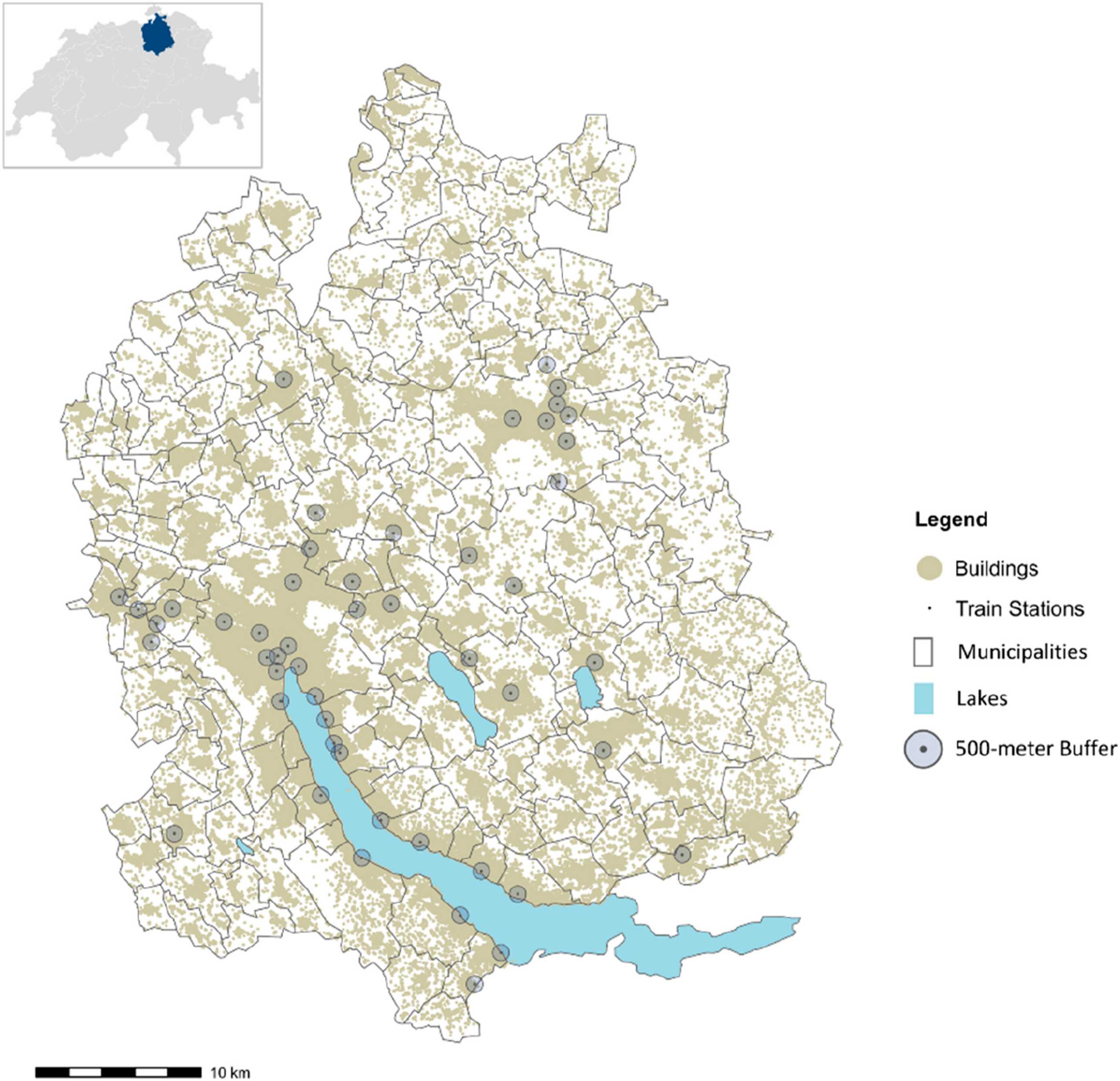New Publication on Densification around Train Stations
Elena Lutz, Michael Wicki, and David Kaufmann recently published a new article in Environment and Planning B: Urban Analytics and City Science. The article examines the effects of densification on the socioeconomic population composition around train stations in the Canton of Zurich, Switzerland. They find that replacement construction increases inequality in access to housing and public transit.
Densification is a key concept in contemporary urban planning. Yet, there are widespread concerns about densification causing displacement and gentrification as outlined in a recent policy report by SPUR. This paper examines densification around train stations—a prevalent form of transit-oriented development (TOD) in cities with established public transit systems—in the Canton of Zurich, Switzerland. It assesses the effect of densification around train stations on the socioeconomic population composition in these areas and investigates three forms of direct and indirect displacement:
- Demolition-induced displacement
- Neighborhood change-induced displacement
- Exclusionary displacement
To understand how new denser housing construction affects who can live close to public transit, the authors leverage 1.8 million linked person-housing unit observations for all individuals in the Canton of Zurich living within 500 meters of one of the analyzed train station. The paper uses regression analysis to quantify the relationship between building more new housing and the in-moving and out-moving of different socioeconomic groups.

The results show that the effect of densification on access to public transit for low-income households is complex: even though densification increases the absolute number of low-income residents, it primarily benefits middle- and high-income households. Specifically, there is a decline in the share of low-income residents, attributed to the influx of younger high-income individuals. Moreover, incumbent low-income residents experience an increased risk of direct displacement due to housing demolitions. These outcomes highlight the limitations of TOD strategies in mitigating persistent socioeconomic disparities in housing and public transit access, emphasizing the need for more comprehensive measures to address the challenges of equitable housing and public transit accessibility.
The full paper is available open access external page here.
The policy report on densification and displacement is available in German here.